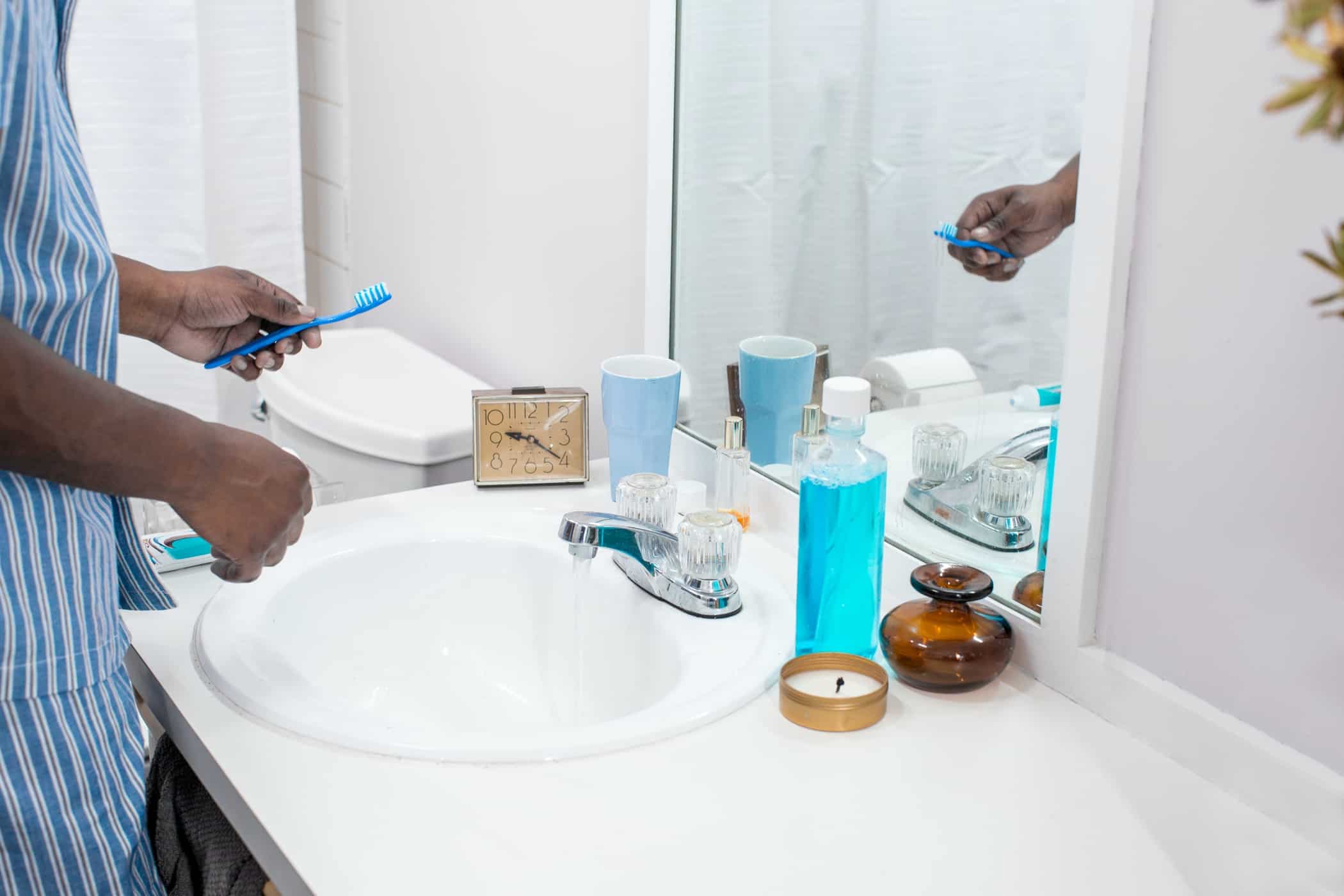Identifying Sources of Odor: Under Bathroom Sink Smells Bad

Under bathroom sink smells bad – Unveiling the culprit behind the unpleasant odor emanating from beneath your bathroom sink is crucial for effective remediation. Common sources of this malodorous predicament include mold, mildew, plumbing issues, and leaks. Each of these potential offenders exhibits distinct telltale signs and symptoms, enabling you to pinpoint the root cause with precision.
When the odor emanating from beneath your bathroom sink becomes unbearable, it’s time to address the issue. A bathroom vanity 48 single sink can provide a stylish solution, concealing the source of the unpleasant smell while offering ample storage space.
Its sleek design will complement any bathroom decor, leaving you with a fresh and inviting space.
Mold and Mildew
- Musty, earthy odor
- Visible mold or mildew growth on surfaces
- Damp or humid conditions
- Discoloration or staining on surfaces
Plumbing Issues
- Foul, sewage-like odor
- Gurgling or bubbling sounds from drains
- Slow drainage or clogs
- Leaks or water damage around pipes
Leaks
- Musty or moldy odor
- Visible water stains or discoloration
- Damp or wet surfaces
- Increased water usage
Inspection and Diagnosis

To identify the source of the odor, a thorough inspection of the bathroom sink area is crucial. This involves checking for visible signs of mold, mildew, leaks, or clogs in pipes and drains.
Begin by examining the sink itself. Look for any visible mold or mildew growth on the surface or around the edges. Check the faucet and drain for any leaks or drips. If there are leaks, tighten the connections or replace the faulty parts.
Checking Pipes and Drains
Next, inspect the pipes and drains under the sink. Use a flashlight to illuminate dark areas and look for any signs of leaks or clogs. Feel the pipes for any warm or wet spots, which may indicate a leak. If you suspect a clog, try using a drain cleaner or plunging the drain.
Using Moisture Detectors
For a more thorough inspection, consider using a moisture detector. These devices can detect even small amounts of moisture in walls or floors, which may indicate a hidden leak or water damage. Place the detector in various locations under the sink and around the pipes to check for any readings.
Odor Elimination Techniques

Ridding your bathroom sink of unpleasant odors requires a comprehensive approach. By implementing effective cleaning, deodorizing, and ventilation techniques, you can restore a fresh and odor-free environment.
Cleaning
Thoroughly clean the sink and surrounding area with a mild dish soap or all-purpose cleaner. Pay special attention to areas where water tends to accumulate, such as the drain and faucet base. Rinse thoroughly with clean water and dry with a clean cloth.
Deodorizing
Natural solutions can effectively neutralize odors under bathroom sinks.
- Baking Soda: Sprinkle baking soda around the drain and let it sit overnight. Vacuum or wipe it up the next day to absorb odors.
- Vinegar: Pour a cup of white vinegar down the drain and let it sit for 30 minutes. Flush with hot water to remove any lingering odors.
- Bleach: Mix 1/2 cup of bleach with 1 gallon of water. Pour the solution down the drain and let it sit for 15 minutes. Flush thoroughly with water.
Ventilation, Under bathroom sink smells bad
Proper ventilation is crucial for preventing odor buildup. Use an exhaust fan when showering or bathing to remove excess moisture. If there is no exhaust fan, open a window to allow fresh air to circulate.
The musty odor emanating from beneath the bathroom sink is a persistent annoyance. Its source could lie in a leaky pipe, a clogged drain, or a forgotten sponge. One effective solution is to elevate the sink by installing a bathroom vanity with raised sink.
This will not only improve aesthetics but also provide easier access for cleaning, reducing the likelihood of lingering odors.